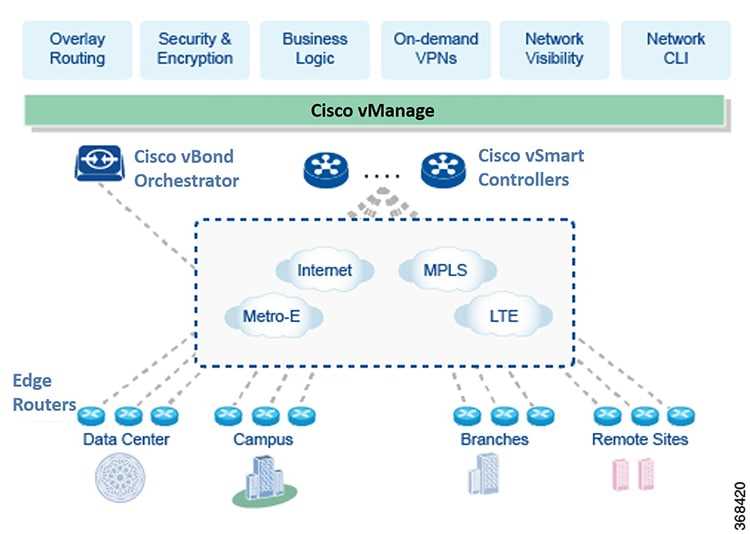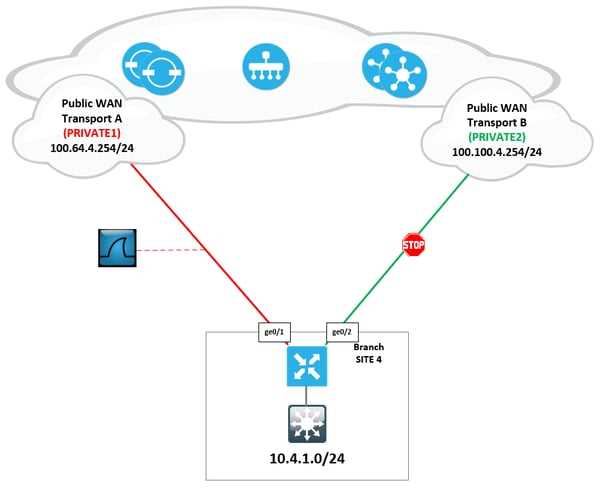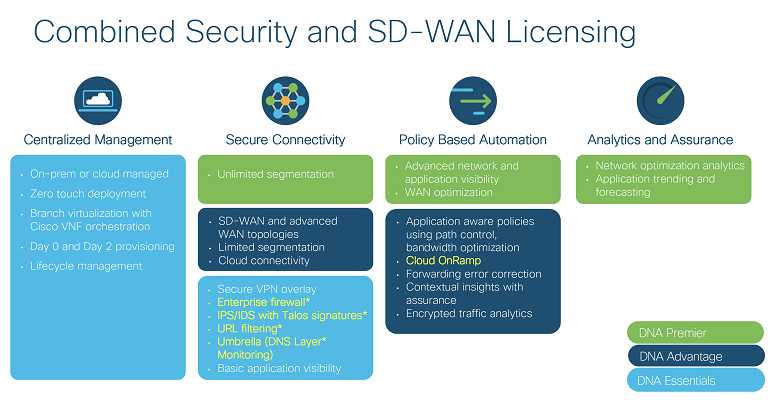
Are you preparing for the Cisco SD-WAN certification exam? If so, you’ve come to the right place. In this article, we will provide you with a comprehensive guide to the most important questions and answers you need to know to pass the exam.
SD-WAN, or Software-Defined Wide Area Network, is a revolutionary technology that allows organizations to manage and optimize their networks in a more efficient and cost-effective way. As demand for SD-WAN expertise continues to rise, obtaining the Cisco SD-WAN certification can greatly enhance your career opportunities.
When it comes to preparing for the Cisco SD-WAN exam, it’s essential to have a solid understanding of the key concepts and principles of SD-WAN architecture. This includes knowledge of Cisco’s SD-WAN solutions, such as Cisco Viptela and Cisco Meraki, as well as proficiency in deploying, configuring, and troubleshooting SD-WAN networks.
Throughout the exam, you can expect to be tested on topics such as SD-WAN overlay architecture, routing and switching protocols, security features, traffic engineering, and network management. By familiarizing yourself with the following exam questions and answers, you will be well-prepared to tackle any challenge that comes your way during the certification process.
Cisco SD-WAN Exam Questions and Answers

In the world of networking, Cisco SD-WAN has gained significant popularity due to its ability to simplify and optimize branch office connectivity. As more organizations transition to SD-WAN, there is a growing demand for professionals who possess a deep understanding of this technology. The Cisco SD-WAN exam evaluates an individual’s knowledge and skills in deploying and managing Cisco SD-WAN solutions.
Here are some frequently asked questions and corresponding answers to help you prepare for the Cisco SD-WAN exam:
- Q: What is the purpose of Cisco SD-WAN?
- A: Cisco SD-WAN, also known as Software-Defined Wide Area Networking, aims to provide a more flexible and efficient way of connecting branch offices and remote locations. It enables organizations to leverage multiple transport technologies, such as MPLS, Internet, and 4G/5G, to create a secure and reliable wide area network.
- Q: What are the key components of Cisco SD-WAN architecture?
- A: Cisco SD-WAN architecture comprises four main components: vEdge routers, vSmart controllers, vBond orchestrators, and vManage. vEdge routers are responsible for establishing secure connections with other routers and devices, while vSmart controllers provide centralized policy and configuration management. vBond orchestrators serve as the initial contact point for devices joining the SD-WAN fabric, and vManage is the centralized management platform for monitoring and troubleshooting the SD-WAN deployment.
- Q: What are some benefits of Cisco SD-WAN?
- A: Cisco SD-WAN offers several benefits to organizations, including enhanced application performance and user experience, increased agility and scalability, simplified management and troubleshooting, and optimized cost and resource utilization. It also enables seamless integration with cloud services and provides advanced security features to protect the network and data.
- Q: How can one prepare for the Cisco SD-WAN exam?
- A: To prepare for the Cisco SD-WAN exam, it is recommended to study the official Cisco SD-WAN documentation and resources. Additionally, hands-on experience with Cisco SD-WAN solutions and participating in training courses or practice exams can help candidates familiarize themselves with the technology and exam format.
By understanding and answering these commonly asked questions, you can improve your knowledge and readiness for the Cisco SD-WAN exam. Remember to supplement your study with practical experience and thorough preparation to increase your chances of success.
What is Cisco SD-WAN?

Cisco SD-WAN, or Software-Defined Wide Area Networking, is a technology that simplifies and optimizes the management of wide area networks. It provides organizations with a flexible and scalable solution to connect their branch offices, data centers, and cloud environments.
SD-WAN allows businesses to securely connect their networks through various transport options, including MPLS, broadband, 4G/5G, and satellite. It uses centralized orchestration and policy-based automation to dynamically route traffic across different network paths, ensuring the best performance and reliability for applications.
Key features of Cisco SD-WAN:
- Transport independence: SD-WAN enables organizations to leverage multiple transport options, such as MPLS, broadband, and cellular, to provide optimal connectivity.
- Centralized management: The solution offers a centralized controller that allows administrators to configure and monitor the entire network from a single interface.
- Application-aware routing: SD-WAN uses application visibility and control to intelligently route traffic based on application requirements and network conditions.
- Optimized performance: The technology can prioritize critical applications and apply advanced traffic optimization techniques, such as path selection, traffic shaping, and quality of service (QoS).
- Security: Cisco SD-WAN includes integrated security features, such as encrypted tunnels, firewall capabilities, and threat intelligence, to protect network traffic and data.
Cisco SD-WAN helps businesses reduce costs, improve network performance, and simplify network management. It provides the flexibility and agility required to support digital transformation initiatives, such as cloud adoption, IoT, and remote workforce connectivity.
Why is Cisco SD-WAN important?

Cisco SD-WAN, also known as Software-Defined Wide Area Network, is an important technology that revolutionizes the way organizations manage and operate their wide area networks. It provides a centralized control and management system, allowing businesses to optimize their network performance, reduce costs, and improve overall user experience.
Cost Savings: One of the primary reasons why Cisco SD-WAN is important is its ability to reduce costs. It enables organizations to replace expensive MPLS connections with more cost-effective options like internet broadband and LTE, without compromising on performance. This can result in significant cost savings for businesses, especially those with multiple branch locations.
Improved Performance: Cisco SD-WAN leverages intelligent traffic management and application-aware routing to optimize network performance. It can automatically route traffic over the most suitable path based on real-time conditions, such as network congestion or link instability. By ensuring reliable and efficient connectivity, Cisco SD-WAN enhances application performance and user experience.
Enhanced Security: Security is a critical aspect of any network infrastructure. Cisco SD-WAN incorporates advanced security features, such as integrated firewall, intrusion prevention system, and encryption, to protect data transmission and ensure network security. It also offers centralized policy management, allowing businesses to enforce consistent security policies across all branch locations.
Flexibility and Scalability: Cisco SD-WAN provides flexibility and scalability, allowing businesses to easily adapt to changing networking requirements. It enables rapid deployment of new branch offices and simplifies network expansion, making it an ideal solution for organizations with growing needs. Additionally, the centralized management system allows for efficient configuration and monitoring of the network, saving time and effort.
In summary, Cisco SD-WAN offers numerous benefits for organizations, including cost savings, improved performance, enhanced security, and flexibility. With its advanced features and capabilities, Cisco SD-WAN has become an essential technology for businesses looking to streamline their network operations and stay ahead in today’s digital era.
How does Cisco SD-WAN work?
Cisco SD-WAN (Software-Defined Wide Area Networking) is a solution that simplifies and optimizes the management and operation of wide area networks (WANs). It provides organizations with a secure, scalable, and flexible network architecture that can seamlessly connect branches, data centers, and cloud environments.
At the heart of Cisco SD-WAN is the control plane, which centrally manages the network and makes decisions about how traffic should be routed across the WAN. The control plane uses software-defined networking (SDN) principles to dynamically allocate network resources and optimize the performance of applications running over the network. It also incorporates advanced security features to protect data and ensure compliance with regulatory requirements.
Cisco SD-WAN utilizes a multi-transport approach, allowing organizations to leverage a combination of different network transport technologies, such as MPLS, broadband internet, and cellular connections. This enables organizations to take advantage of the benefits of each transport method, such as cost-effectiveness, reliability, and bandwidth availability, while still maintaining a consistent user experience. The control plane intelligently selects the most appropriate transport for each application or data flow based on real-time performance metrics and network policies.
In addition, Cisco SD-WAN provides visibility and analytics capabilities that allow organizations to gain insights into the performance and utilization of their network. With this information, network administrators can make informed decisions about network optimization and troubleshooting, ensuring that users have a seamless and reliable experience when accessing applications and services.
In summary, Cisco SD-WAN combines software-defined networking, advanced security features, and multi-transport connectivity to deliver an efficient and reliable wide area network solution. It simplifies network management, improves application performance, and enhances overall security, making it an ideal choice for modern organizations with distributed IT environments.
Key Features of Cisco SD-WAN
Cisco SD-WAN offers a range of key features that enhance network connectivity, security, and management:
- Secure Connectivity: Cisco SD-WAN provides secure connectivity between different locations by using a combination of VPN tunnels, firewall, and encryption protocols. This ensures that data transmitted between sites is protected from unauthorized access and ensures the integrity of the network.
- Intelligent Traffic Steering: Cisco SD-WAN makes use of intelligent traffic steering techniques to optimize network performance. It analyzes network conditions in real-time and dynamically selects the most efficient path for transmission, based on criteria such as bandwidth availability, latency, and packet loss.
- Application-Based Routing: Cisco SD-WAN enables organizations to prioritize specific applications and allocate bandwidth accordingly. This allows critical applications to receive priority access to network resources, ensuring optimal performance and user experience.
- Centralized Management: Cisco SD-WAN provides a centralized management platform that allows administrators to easily configure, monitor, and troubleshoot the network. This simplifies network management and reduces the need for manual configuration at each site, saving time and resources.
- Cloud Integration: Cisco SD-WAN seamlessly integrates with cloud services, allowing organizations to extend their WAN to cloud-based applications and services. This enables efficient and secure access to cloud resources, improving overall productivity and scalability.
- End-to-End Security: Cisco SD-WAN incorporates multiple layers of security, including encryption, firewall, and threat detection. It also provides visibility into network traffic, allowing organizations to identify and mitigate potential security threats in real-time.
In conclusion, Cisco SD-WAN offers a comprehensive set of features that optimize network connectivity, enhance security, and simplify network management. By leveraging these features, organizations can improve their overall network performance, enhance user experience, and efficiently manage their SD-WAN infrastructure.
How is Cisco SD-WAN different from traditional WAN?

Cisco SD-WAN is a modern approach to wide area networking that differs significantly from traditional WAN technologies. While traditional WANs rely on expensive and complex MPLS circuits to connect branch offices to a central data center, Cisco SD-WAN leverages software-defined networking (SDN) principles to provide a more flexible and cost-effective solution.
One key difference between Cisco SD-WAN and traditional WAN is the use of software-defined policies to manage and control network traffic. With Cisco SD-WAN, administrators can define policies that dictate how traffic should be routed based on factors such as application type, performance requirements, and security needs. These policies can be easily and centrally managed, empowering organizations to optimize network performance and improve user experience.
- Dynamic path selection: Unlike traditional WANs that rely on static routes, Cisco SD-WAN dynamically selects the optimal path for each packet based on real-time network conditions. This enables efficient utilization of available bandwidth and improves overall network performance.
- Application-aware routing: Cisco SD-WAN has deep visibility into application-level traffic, allowing it to prioritize critical applications and steer traffic to the most appropriate path. This ensures that important applications receive the necessary bandwidth and quality of service.
- Cloud readiness: Traditional WANs often struggle to handle the increasing use of cloud-based applications. Cisco SD-WAN is designed to seamlessly connect branch offices to cloud services, providing enhanced performance and reliability for users accessing cloud resources.
In addition to these technical differences, Cisco SD-WAN also offers benefits such as simplified management, reduced operational costs, and increased agility. By replacing expensive MPLS circuits with more affordable internet connections, organizations can significantly reduce their WAN costs while still maintaining secure and reliable connectivity.
In summary, Cisco SD-WAN represents a significant shift from traditional WAN technologies, offering advanced capabilities for optimizing network performance, enhancing application visibility, and enabling seamless connectivity to cloud resources. Its software-defined approach brings greater flexibility and cost-effectiveness to the modern network infrastructure.